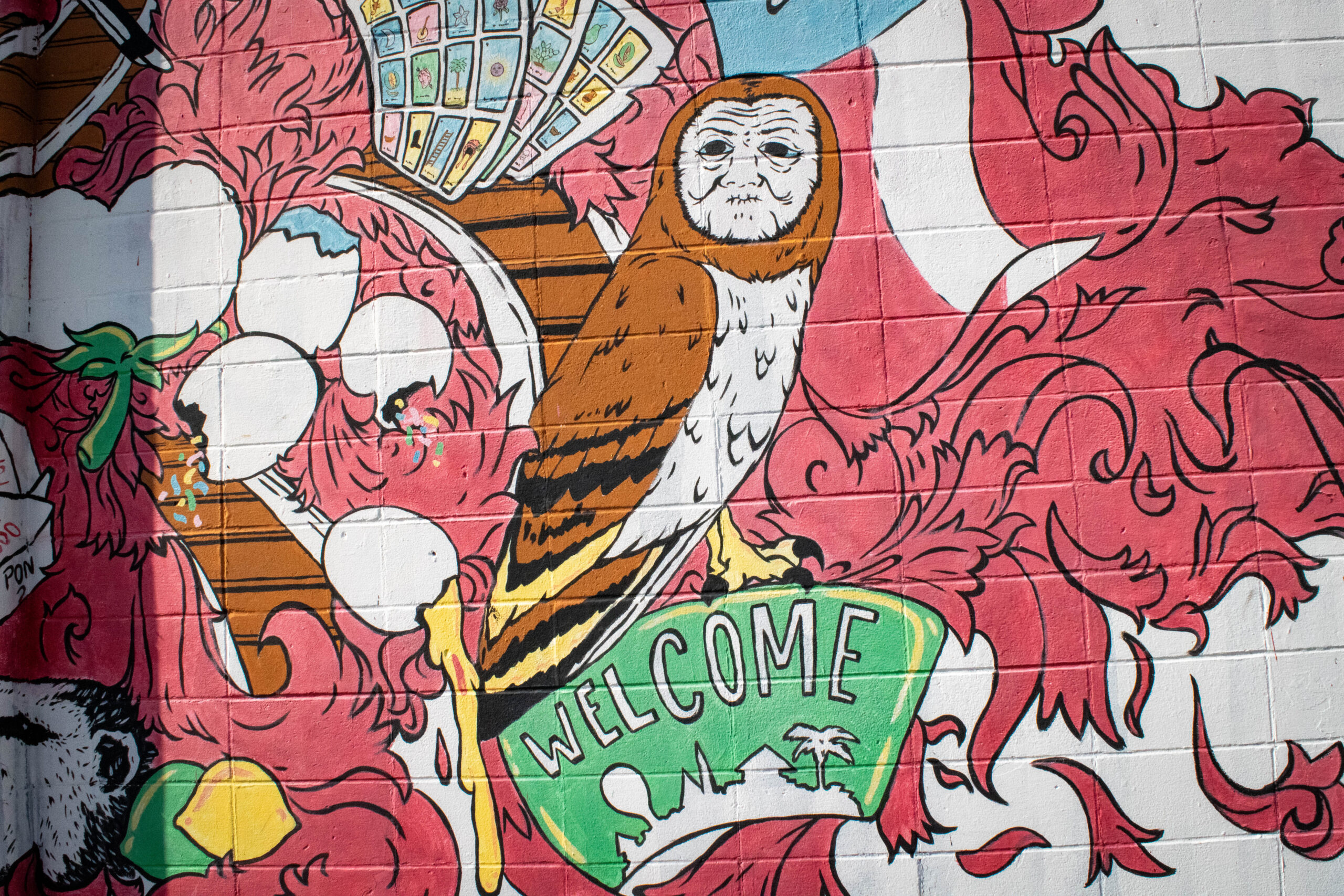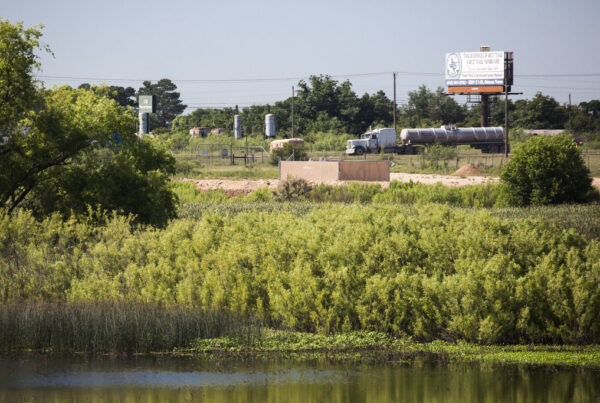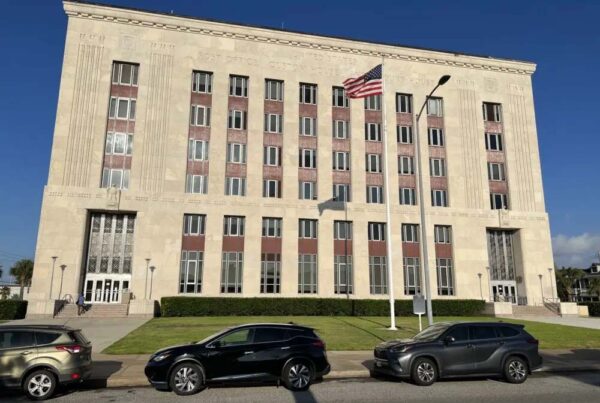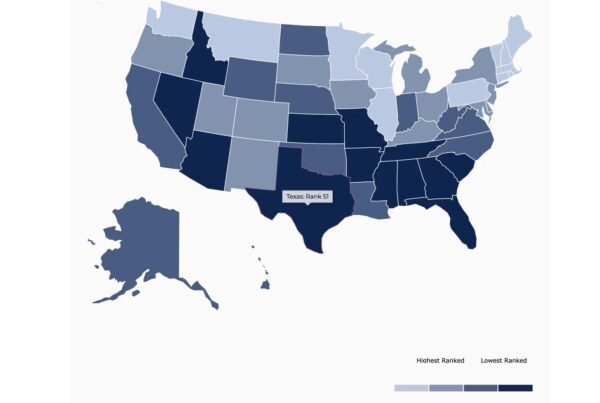The story of La Lechuza usually goes something like this: A man is walking home alone, late at night. Maybe he’s been drinking. All of a sudden, he hears wings rustling – and maybe he sees glowing eyes staring at him from a tree.
If you grew up in South Texas or northern Mexico, there’s a good chance you’ve heard of this legend.
The roots of the legend
There are many versions of La Lechuza – but in all of them, she begins as a woman who has been wronged, according to Rachel González-Martin, a professor of Mexican American studies at UT Austin who specializes in folklore.
“La Lechuza lived at the far end of a small town, which people normally classify as somewhere in the desert area in northern Mexico. She lived alone, and that made townspeople suspicious of her,” she said. “One season, a small child, a little boy, goes missing from the town, and no one is able to find him.”
In this version of the story, the woman is accused of being a witch responsible for the boy’s disappearance. For revenge, she makes a deal with the devil to come back as a shape-shifting owl woman.

An excerpt from the book “Stories That Must Not Die” by Juan Sauvageau, featuring La Lechuza. Kristen Cabrera / Texas Standard
Ayden Castellanos, who grew up reading about La Lechuza, now hosts the “Susto” podcast about Latin and Hispanic folklore.
“The story that I heard growing up was a cautionary tale. It was maybe like a form of or a method to discipline kids, because I was told that if I was out late when I shouldn’t be, or if I was out causing trouble, that the Lechuza would find me. And she would swoop down and she would mess up my hair, scratch me up with her talons,” he said. “And if she was large enough, that she could lift me away and take me and do with me whatever evil plan she had in mind.”
» RELATED: ‘Susto’ podcast highlights and preserves the spooky folk tales of South Texas and beyond
Castellanos said he never saw La Lechuza – but he did hear something once, as a kid.
“I was up late at night, on a school night when I should have been asleep. I was watching TV,” he said. “There were dogs outside in the neighborhood … I was like, ‘Oh, they’re chasing an animal that’s going to get under the house or whatever.’ It’s like, it’s fine. I’ll leave it alone.”
But then one of the dogs yelped, Castellanos said, and he decided to see what was happening.
“As I’m going to pull the blind down, I hear ‘whooo. whoooo’… what freaked me out is I didn’t immediately think, ‘Oh, that’s an owl, that’s a bird.’ It sounded like a person imitating a bird,” he said. “I didn’t see it because immediately I rolled back over, shut the TV off, and I closed my eyes and I said, I’m just going to try and sleep through this. I don’t want to know what’s out there after all.”
‘El Pajaro Gigante’ terrorizes South Texas
In the small rural town of Robstown, right outside of Corpus Christi, the legend of La Lechuza is tied with that of another cryptid – one indelibly linked to the community’s culture: the Big Bird of Robstown, or “El Pajaro Gigante de Robé.”
In 1975, people walking along the county roads at night said they saw a huge, monster bird swooping down at them. Some told the Corpus Christi Caller-Times, which reported on the claims, that the creature was 2 feet tall, while others swore it reached 6 feet. But when it was reported the creature had the face of a human, then connections began to be made to the Lechuza legend.
Soon, sightings were reported in nearby Banquete and Alice. It became something of a wave of hysteria, but one that retained a sense of humor as Robstonians began to embrace their cryptid.
» MORE: We’re Tracking Texas Cryptids all month long
The magazine “La Lomita,” which was part of the rising Chicano movement in the area, published 25 theories about the bird, ranging from it being conjured up to scare people away from the new Familias Unidas organization, to it being a form of justice finally arriving to the town.
The bird was also made into an adversary in an issue of the comic book “Relampago.” Created by Margarito Garza, who later served as a Corpus Christi district judge, the comic featured a protagonist credited as the first Mexican American superhero.
Musical groups were caught up in the moment, as well. Tejano musician Wally Gonzalez released one song about the creature seen all throughout South Texas, but perhaps the most famous song that Robstonians cite even today comes from a group called Los Campeones de Raúl Ruiz, titled “El Pajaro Gigante de Robe.”













